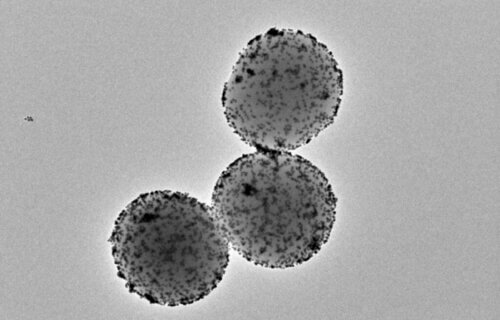🔑 Key Findings:
- Tiny robots can track down and destroy tumors in bladder cancer patients
- These microscopic machines are powered by a substance in urine
- The robots can penetrate a tumor without using specific antibodies
BARCELONA, Spain — A game-changing treatment to combat bladder cancer is on the horizon. Using tiny, self-propelled nanorobots, an international team of researchers was able to reduce bladder tumors by 90 percent with just a single dose.
Bladder cancer, one of the most common tumors in men, poses a significant health challenge due to its high recurrence rate and costly treatment. Conventional treatments require frequent hospital visits and have limited efficacy. However, the new study demonstrates a more efficient alternative using nanotechnology.
The nanorobots, essentially tiny machines, are powered by urea, a substance present in urine. These nanomachines consist of a silica sphere equipped with several components, including the enzyme urease and radioactive iodine. Urease reacts with urea to propel the nanorobot, while the radioactive iodine serves to treat the tumor.
“With a single dose, we observed a 90 percent decrease in tumor volume,” says study leader Samuel Sánchez, Catalan Institution for Research and Advanced Studies research professor at the Institute for Bioengineering of Catalonia (IBEC), in a media release. “This is significantly more efficient given that patients with this type of tumor typically have six to 14 hospital appointments with current treatments. Such a treatment approach would enhance efficiency, reducing the length of hospitalization and treatment costs.”
Researchers from IBEC and CIC biomaGUNE overcame several challenges, such as enabling the nanorobots to penetrate the tumor despite lacking specific antibodies. They discovered that the nanorobots could break down the tumor’s extracellular matrix by increasing the pH, allowing for deeper penetration and accumulation within the tumor.
An advanced optical system developed specifically for this project by the Institute for Research in Biomedicine (IRB) Barcelona played a crucial role.
“The innovative optical system that we have developed enabled us to eliminate the light reflected by the tumor itself, allowing us to identify and locate nanoparticles throughout the organ without prior labelling, at an unprecedented resolution,” explains Julien Colombelli, leader of the Advanced Digital Microscopy platform at IRB Barcelona. “We observed that the nanorobots not only reached the tumor but also entered it, thereby enhancing the action of the radiopharmaceutical.”
The study signifies more than three years of collaborative efforts among various institutions. It also marks a significant step for Nanobots Therapeutics, a spin-off of IBEC and ICREA, founded by Sánchez. The company aims to bridge the gap between research and clinical application of these nanorobots.
“Securing robust funding for the spin-off is crucial to continue advancing this technology and, if all goes well, bring it to market and society,” notes Sanchez. “In June, just five months after the creation of Nanobots Tx, we successfully closed the first round of funding, and we are enthusiastic about the future.”

In addition to treating bladder cancer, this study opens the door to using other radioisotopes for therapeutic effects, potentially revolutionizing the way we approach cancer treatment. As the research progresses, the next step is to determine the long-term effects and potential recurrence of tumors after treatment.
“The results of this study open the door to the use of other radioisotopes with a greater capacity to induce therapeutic effects but whose use is restricted when administered systemically,” adds study co-first author Cristina Simó.
The study is published in the journal Nature Nanotechnology.
You might also be interested in:
- New robot tentacle travels deep into lungs to detect and treat cancer
- A shapeshifting swarm of tiny robots could soon clean your teeth without a brush!
- Robotic surgeons lead to faster recovery, fewer complications for cancer patients

If only science could find a ‘nanorobot’ to attack and shrink lung cancer cells by 90% without the lethal side effects, many innocent nonsmokers (and their loved ones) could avoid paying for the sins of second hand smoke by others.